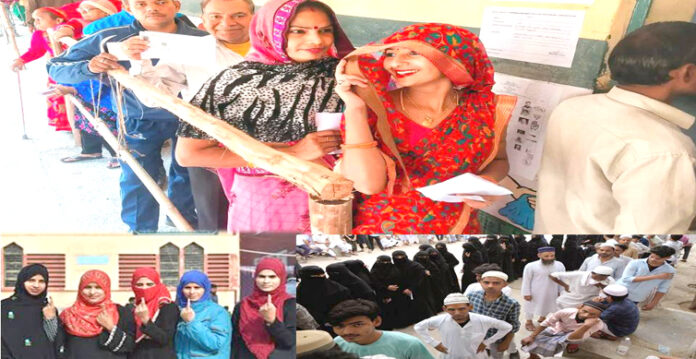As Delhi gears up for its Assembly elections on February 5, the political battlefield is heating up with parties vying for the support of three pivotal demographics—women (Mahila), Muslims, and the middle class. These groups are expected to play a decisive role in determining the city’s electoral outcome, with the Aam Aadmi Party (AAP) currently holding the advantage.
The AAP, which has already announced candidates for all 70 seats, enjoys strong support among women voters. Historically, women have emerged as kingmakers in elections, thanks to higher literacy rates and independent voting patterns. In the 2020 Delhi elections, 60% of women voted for the AAP, giving it a 25% lead over the Bharatiya Janata Party (BJP) in this category. Women voters have consistently supported the AAP over successive elections, influenced by the party’s focus on welfare schemes.
Muslim voters, accounting for 13% of Delhi’s population, have also become a crucial vote bank for the AAP. Once staunch supporters of the Congress, Muslims have increasingly shifted their allegiance to the AAP over the past decade. In the 2020 elections, a staggering 83% of Muslims voted for the AAP, while the Congress and BJP garnered only 13% and 3%, respectively. Of the AAP’s 54% vote share in 2020, 11% was contributed by Muslim voters. This demographic alone accounts for 10% of the AAP’s 15% overall lead over the BJP.
Also Read: Challenges Ahead for Congress in Telangana as it Courts Muslim Voters
The middle class, which makes up 45% of Delhi’s population, adds another layer of complexity to the electoral landscape. Traditionally a BJP stronghold, the middle class has shifted its support toward the AAP in state elections. In 2015, the AAP secured 55% of the middle-class vote, leading the BJP by 20%. However, by 2020, the AAP’s share dropped slightly to 53%, while the BJP increased its support to 39%, narrowing the gap to 14%. This demographic remains crucial for both parties as it accounts for seven percentage points of the AAP’s lead over the BJP.
With less than a month to the polls, the Congress and BJP are still finalizing their candidate lists, leaving the AAP in a commanding position. However, as the voting patterns of women, Muslims, and the middle class evolve, all eyes will be on these key demographics to see whether they will continue to favor the AAP or shift their support. The results will be announced on February 8, providing a clear picture of whether the “Mahila,” Muslims, or the middle class will crown the next ruler of Delhi.
(This story is sourced from a third-party syndicated feed. Raavi Media takes no responsibility or liability of any nature. Raavi Media management/ythisnews.com can alter or delete the content without notice for any reason.)


